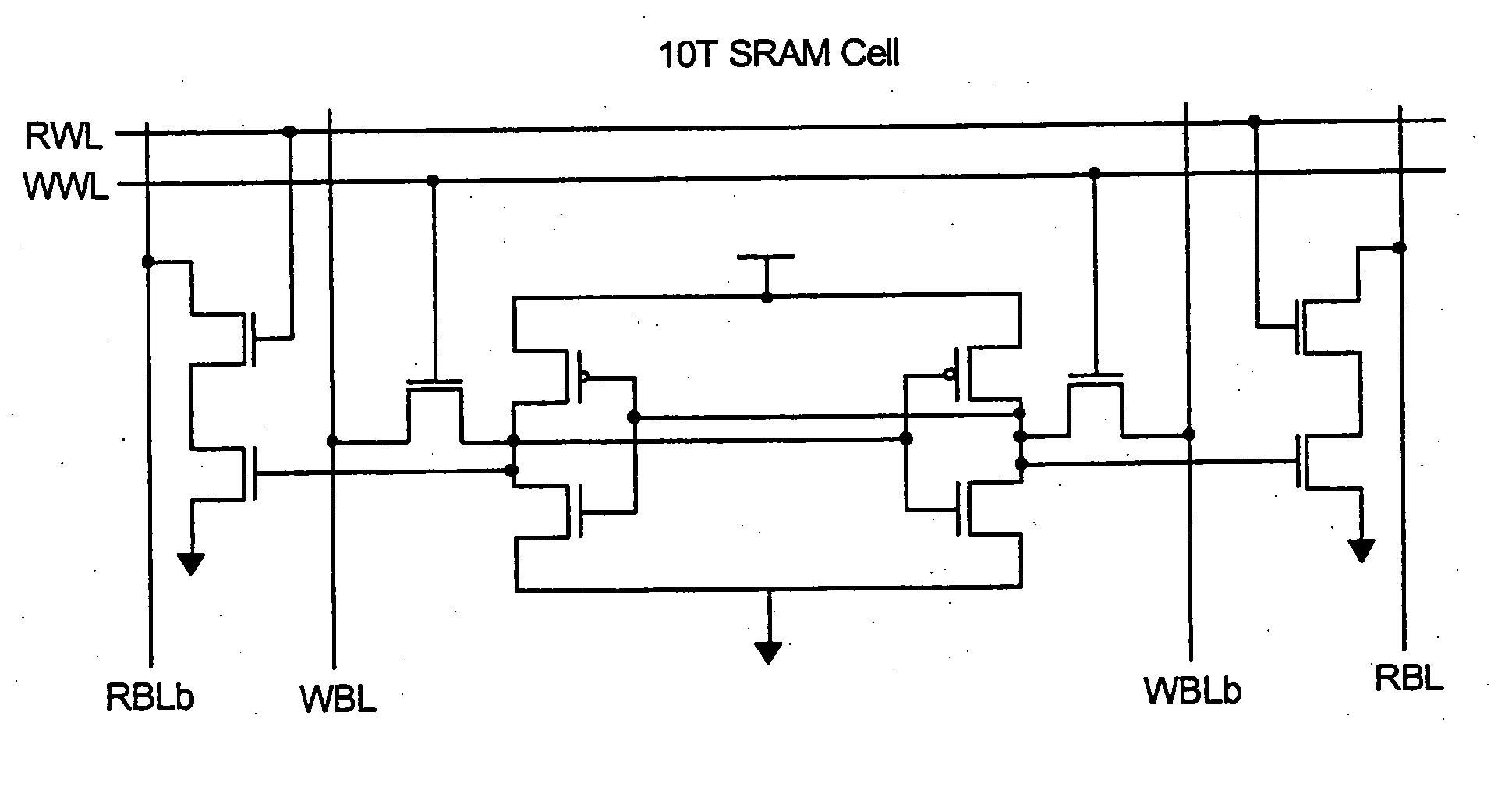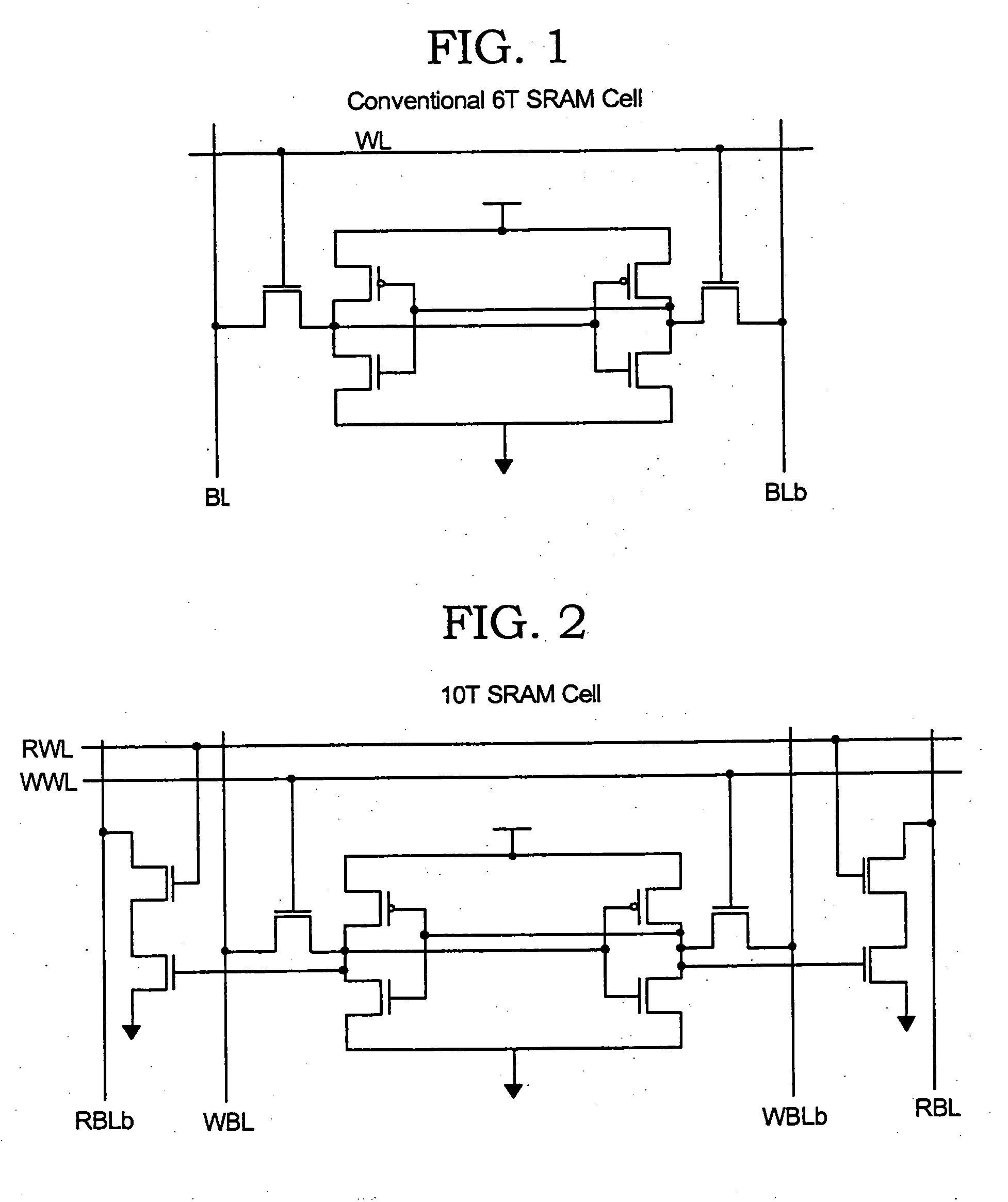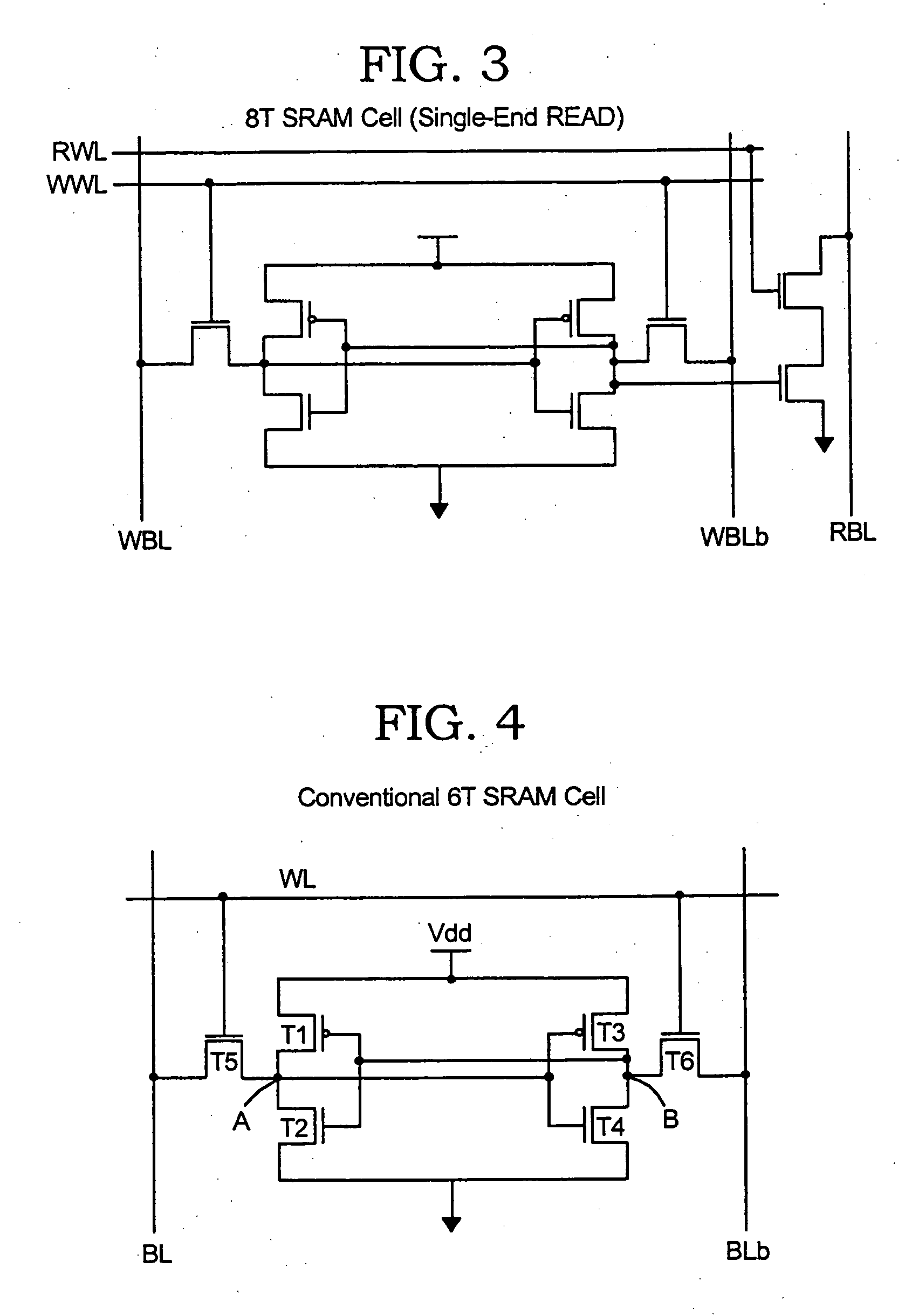Back-gate controlled read SRAM cell
a sram cell, back gate control technology, applied in static storage, digital storage, instruments, etc., can solve the problems of inability to scale the sram cell size in the future, inability to read sram cell size large, and inability to maintain the sram cell size. , to achieve the effect of improving the read stability of the sram cell, reducing the overhead area, and reducing the number of transistors
- Summary
- Abstract
- Description
- Claims
- Application Information
AI Technical Summary
Benefits of technology
Problems solved by technology
Method used
Image
Examples
Embodiment Construction
[0023]FIG. 4 illustrates a standard CMOS static RAM cell defined by six MOS transistors T1, T2, T3, T4, T5, and T6; of these transistors, transistors T1 and T2 are PMOS transistors while the remaining transistors are of the NMOS type. Transistors T1 and T3 are serially connected between Vdd and ground to form a first inverter with a data node A between the two transistors, and, in a similar manner, transistors T2 and T4 are likewise connected between Vdd and ground to form a second inverter with a data node B therebetween. The gates of the transistors of each inverter are connected together and cross-coupled to the data node of the other inverter. The transistor T5 is connected between the bit line BL and the data node A to provide data access thereto, and the transistor T6 is connected between the complementary bit line BLb and the data node B to similarly provide data access. The gates of the data access transistors T5 and T6 are connected to respective word lines WL; ancillary ci...
PUM
 Login to View More
Login to View More Abstract
Description
Claims
Application Information
 Login to View More
Login to View More - R&D
- Intellectual Property
- Life Sciences
- Materials
- Tech Scout
- Unparalleled Data Quality
- Higher Quality Content
- 60% Fewer Hallucinations
Browse by: Latest US Patents, China's latest patents, Technical Efficacy Thesaurus, Application Domain, Technology Topic, Popular Technical Reports.
© 2025 PatSnap. All rights reserved.Legal|Privacy policy|Modern Slavery Act Transparency Statement|Sitemap|About US| Contact US: help@patsnap.com



